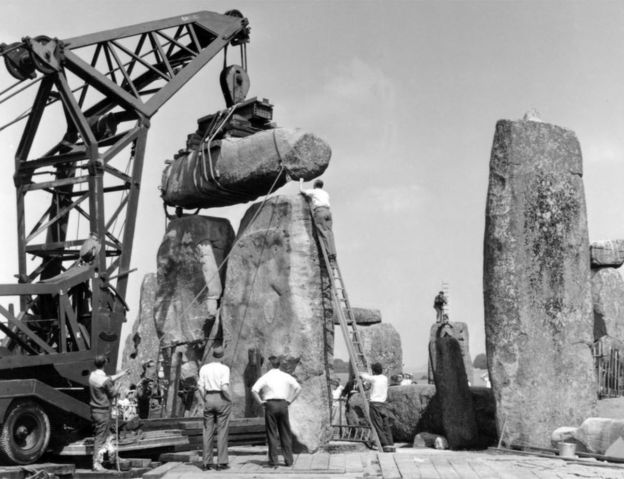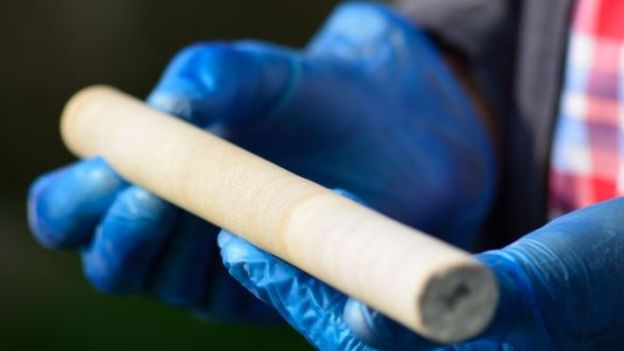The origin of the giant sarsen stones at Stonehenge has finally been discovered with the help of a missing piece of the site which was returned after 60 years. A test of the metre-long core was matched with a geochemical study of the standing megaliths.
Here's the story from BBC News:
Stonehenge: Sarsen stones origin mystery solved
BBC News, July 29, 2020 PA
PA
The origin of the giant sarsen stones at Stonehenge has finally been discovered with the help of a missing piece of the site which was returned after 60 years.
A test of the metre-long core was matched with a geochemical study of the standing megaliths.
Archaeologists pinpointed the source of the stones to an area 15 miles (25km) north of the site near Marlborough.
English Heritage's Susan Greaney said the discovery was "a real thrill".
The seven-metre tall sarsens, which weigh about 20 tonnes, form all fifteen stones of Stonehenge's central horseshoe, the uprights and lintels of the outer circle, as well as outlying stones.
The clue that solved the #Stonehenge mystery had been sitting in an office in Florida. 🤯🤯— BBC Breakfast (@BBCBreakfast) July 30, 2020
Archaeologists have found the source of the sarsen stones ⤵️🌳
More here: https://t.co/FYmcmWb8GM pic.twitter.com/woK5tv15J4
The monument's smaller bluestones have been traced to the Preseli Hills in Wales, but the sarsens had been impossible to identify until now.
The return of the core, which was removed during archaeological excavations in 1958, enabled archaeologists to analyse its chemical composition.
No-one knew where it was until Robert Phillips, 89, who was involved in those works, decided to return part of it last year.
 HISTORIC ENGLAND
HISTORIC ENGLAND
Researchers first carried out x-ray fluorescence testing of all the remaining sarsens at Stonehenge which revealed most shared a similar chemistry and came from the same area.They then analysed sarsen outcrops from Norfolk to Devon and compared their chemical composition with the chemistry of a piece of the returned core.
English Heritage said the opportunity to do a destructive test on the core proved "decisive", as it showed its composition matched the chemistry of sarsens at West Woods, just south of Marlborough.
Prof David Nash from Brighton University, who led the study, said: "It has been really exciting to harness 21st century science to understand the Neolithic past, and finally answer a question that archaeologists have been debating for centuries.
 ENGLISH HERITAGE
ENGLISH HERITAGE'Substantial stones'
"Each outcrop was found to have a different geochemical signature, but it was the chance to test the returned core that enabled us to determine the source area for the Stonehenge sarsens."
Ms Greaney said: "To be able to pinpoint the area that Stonehenge's builders used to source their materials around 2,500 BC is a real thrill.
"While we had our suspicions that Stonehenge's sarsens came from the Marlborough Downs, we didn't know for sure, and with areas of sarsens across Wiltshire, the stones could have come from anywhere.
"They wanted the biggest, most substantial stones they could find and it made sense to get them from as nearby as possible."
Ms Greaney added the evidence highlights "just how carefully considered and deliberate the building of this phase of Stonehenge was".

No comments:
Post a Comment